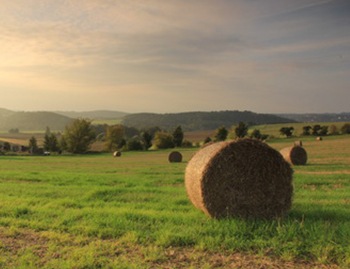How cricket flour is being used in innovative food products like protein bars and baked goods
With high protein content, environmental friendliness, and versatility, cricket flour is revolutionizing the food industry.

With high protein content, environmental friendliness, and versatility, cricket flour is revolutionizing the food industry.

With their efficient growth rate, versatility, and ease of farming, crickets are a promising solution to meet the rising demand for food while mitigating environmental concerns.

Orthoptera protein bars are ideal for endurance athletes, offering a convenient energy boost rich in essential amino acids, carbs, and healthy fats.

The meat industry’s environmental impact is significant, but cricket farming offers a sustainable alternative. Requiring fewer resources and generating less waste, crickets provide high protein, vitamins, and minerals.

Choosing crickets over traditional livestock can help combat deforestation by requiring less land for farming. Cricket farming needs up to 12 times less land than beef production, offering a more sustainable protein source.

The consumption of crickets as a sustainable protein source is gaining traction due to their nutritional richness and eco-friendly production, though concerns about safety persist, highlighting the need for further research and strict safety standards in the insect-based food industry.

Crickets hold cultural significance in various societies worldwide, such as Mexico, where they are enjoyed as “chapulines,” a traditional snack toasted with garlic and lime. In Thailand, they’re a street food staple, while in Japan, “inago” are grilled with soy sauce, reflecting their long-standing culinary heritage.

Crickets offer a sustainable and efficient solution to global food challenges, requiring less water and land than traditional livestock while producing fewer greenhouse gas emissions. Rich in protein and nutrients, they present a viable alternative to resource-intensive meat and dairy products, with potential to address malnutrition and food insecurity worldwide.

Edible insects, such as crickets, offer nutritional benefits like high protein and essential vitamins, and their sustainable production makes them an environmentally friendly protein source, although consumer acceptance and understanding of their benefits remain barriers to widespread adoption.

Insects offer a sustainable and nutritious alternative to traditional livestock farming, requiring less resources, emitting fewer greenhouse gases, and providing a valuable source of protein while reducing organic waste.
| Cookie | Duration | Description |
|---|---|---|
| cookielawinfo-checkbox-analytics | 11 months | This cookie is set by GDPR Cookie Consent plugin. The cookie is used to store the user consent for the cookies in the category "Analytics". |
| cookielawinfo-checkbox-functional | 11 months | The cookie is set by GDPR cookie consent to record the user consent for the cookies in the category "Functional". |
| cookielawinfo-checkbox-necessary | 11 months | This cookie is set by GDPR Cookie Consent plugin. The cookies is used to store the user consent for the cookies in the category "Necessary". |
| cookielawinfo-checkbox-others | 11 months | This cookie is set by GDPR Cookie Consent plugin. The cookie is used to store the user consent for the cookies in the category "Other. |
| cookielawinfo-checkbox-performance | 11 months | This cookie is set by GDPR Cookie Consent plugin. The cookie is used to store the user consent for the cookies in the category "Performance". |
| viewed_cookie_policy | 11 months | The cookie is set by the GDPR Cookie Consent plugin and is used to store whether or not user has consented to the use of cookies. It does not store any personal data. |